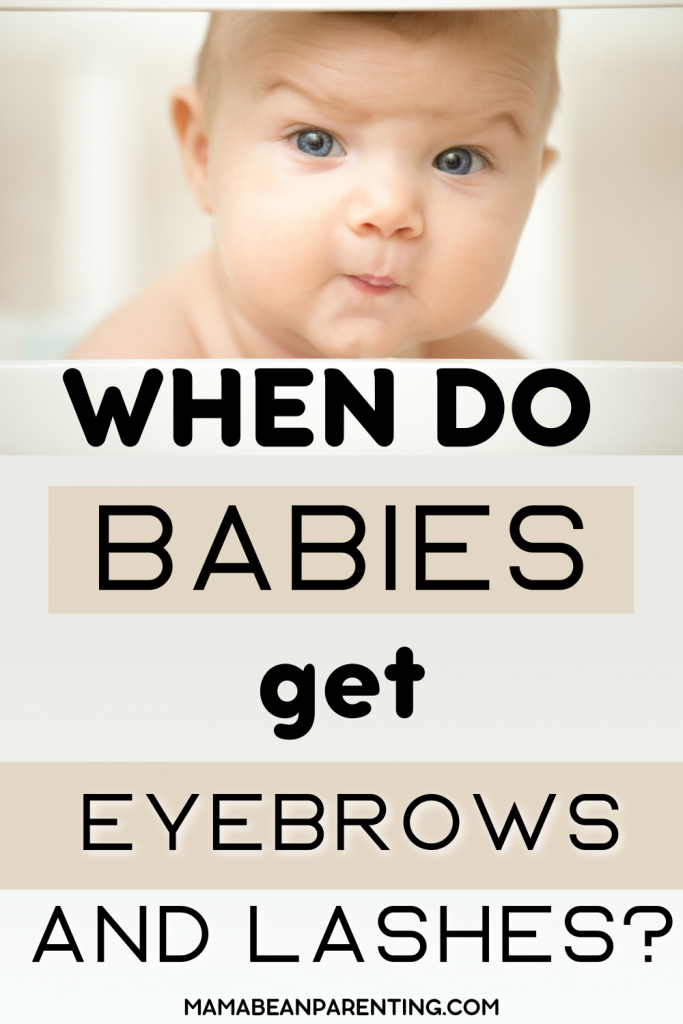Tiny strips of hair that convey endless emotions, and eyebrows help us communicate and protect us from debris. We use them all the time, but when do babies get eyebrows?
It’s an exciting milestone for parents, because it opens up a world of facial expressions.
So, when can you expect your baby to grow visible eyebrows?
A newborn is born with physical features that stay or alter subtly over time, but eyebrows form gradually.
How long does it take? It varies.
Yes, it varies on a case-by-case basis, but most babies generally grow their eyebrows and eyelashes at around two or three months.
Understanding the timeline of eyebrow development is key, and being patient on top of it, because some babies are born with eyebrows, while other take time to develop their own.
How long will it take for your precious little baby?
In this article, we will explore not only the timeline but the many details of how a baby develops and grows their eyebrows and eyelashes.
For example, understanding when do baby’s eyelashes and eyebrows get darker can help you predict your baby’s development.
From pregnancy to birth to motherhood, all sorts of questions arise.
We’re here to help answer any questions and concerns you might have, starting with why your baby hasn’t fully grown their eyebrows yet. Grab yourself a cup of coffee and strap in as we dive in.
How Eyebrows Develop in Fetuses
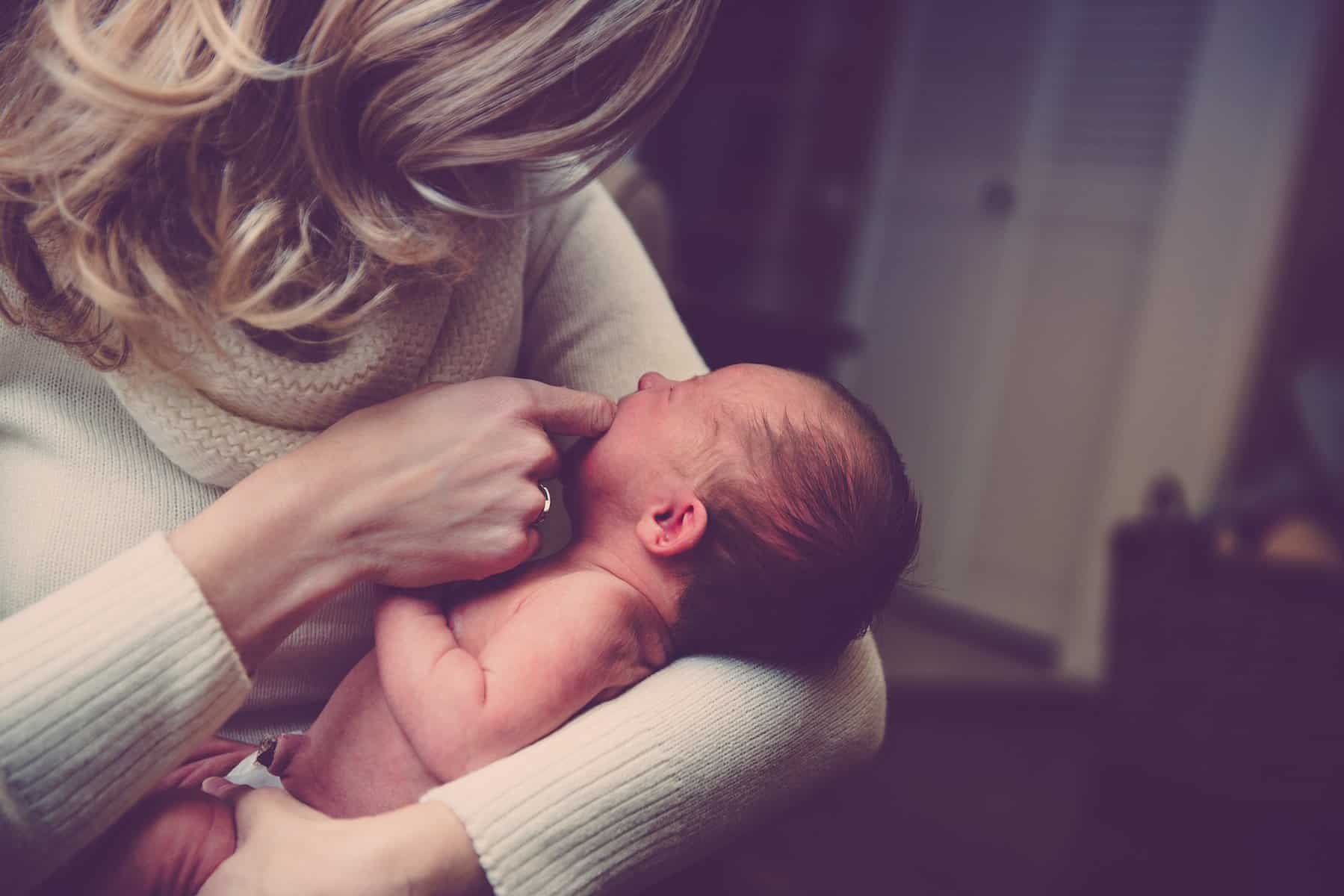
When do babies get eyebrows and when do babies get eyelashes are important questions for parents. Eyebrows help little babies express emotions.
In doing so, it allows parents to understand their child better, because grown eyebrows are capable of conveying intent.
That sounds great, but what if your baby takes longer to grow hair?
Don’t worry – that’s normal. Even though it takes time for your baby’s eyebrows to fully grow, it’s a complex process that predates birth. In fact, it starts with fetal development.
It’s during the 9th week of gestation that your baby starts to develop their eyebrows.
When your baby’s eyebrows begin to form, the fetus actually weighs less than a gram.
The process begins with the formation of hair follicles. Eventually, usually by the end of the first trimester, your baby’s hair follicles fully form, and that’s when their eyebrows begin to take shape.
Still, it takes further development for them to become distinct.
During the second trimester, although fully formed, the hair follicles continue to elongate, becoming more distinct and more prominent.
That’s when the hair starts to grow and when your baby’s eyebrows start to take on their distinguishing arch-like shape.
By the end of the third trimester, the fetal development stage of the eyebrows is coming to an end, and the eyebrows are almost completely developed.
However, it’s important to note that your baby’s eyebrows and eyelashes are still very delicate and light in color.
In fact, the process continues after birth, sometimes for even a year, if not more.
During this time, a baby can have eyebrows that are light, thin and pale in color.
Therefore, eyebrow growth is a gradual process that predates birth. It starts during the first trimester and continues to transpire after birth.
By understanding the timeline, you can learn to anticipate and observe your baby’s development of eyebrow facial features.
How Eyebrows Develop After Birth
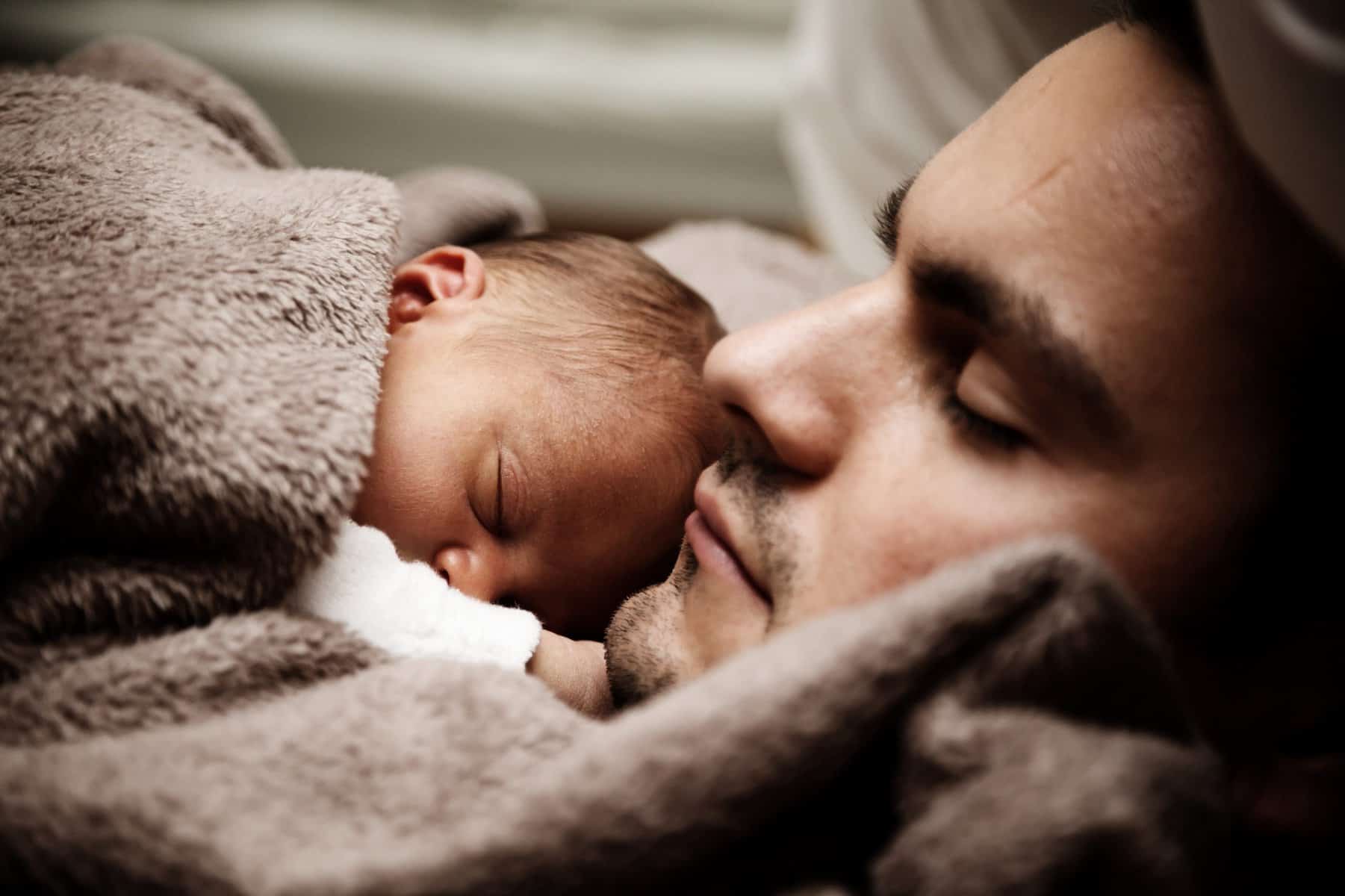
Now that we know that baby’s eyebrows start to form during prenatal development, it’s important to ask when do babies get eyebrows that are fully developed, and how do baby’s eyebrows continue to change?
After birth, the postnatal development stage takes place.
When you hold your newborn for the first time, chances are that their eyebrows won’t be completely visible, if at all. That’s because eyebrows grow and darken over time. There are exceptions to the rule, but usually it takes more time for baby’s eyebrows to grow.
How long? Hard to say, but they become more noticeable after 2 to 3 months.
During the first few months, a baby usually has thin and light eyebrows and eyelashes.
With time, however, they become thicker, darker and generally more prominent.
That’s why it’s important for parents to learn when to expect their baby to grow their eyebrows completely. Usually, there’s no real reason to worry, even though your baby might at first have eyebrows that are thin, pale in color and practically invisible.
So, when do babies get eyebrows that are completely grown? Truthfully, it can take up to 12 months. Parents have to be patient with their babies and remember that eyebrow growth varies from baby to baby.
Besides, every person has a unique set of eyebrows.
As the years go by, a child’s face undergoes many physical changes. Bone structure, in particular, changes rapidly. As such, as your baby’s face changes, their eyebrows change, too.
These transitions and developments continue to transpire all the way to adulthood.
Therefore, even if your baby has grown eyebrows, that doesn’t mean that the growing has stopped. Even after childhood, eyebrows continue to change, to grow thicker, longer and may even change in color.
However, these changes in particular are subtle and gradual.
If you’re wondering when do babies get eyebrows – it generally happens around 3 to 4 months.
Yes, the process continues during childhood, but if your child hasn’t yet formed their eyebrows distinctly, then it can help you anticipate when it’s going to happen.
The Do’s and Don’ts of Baby Eyebrow Care
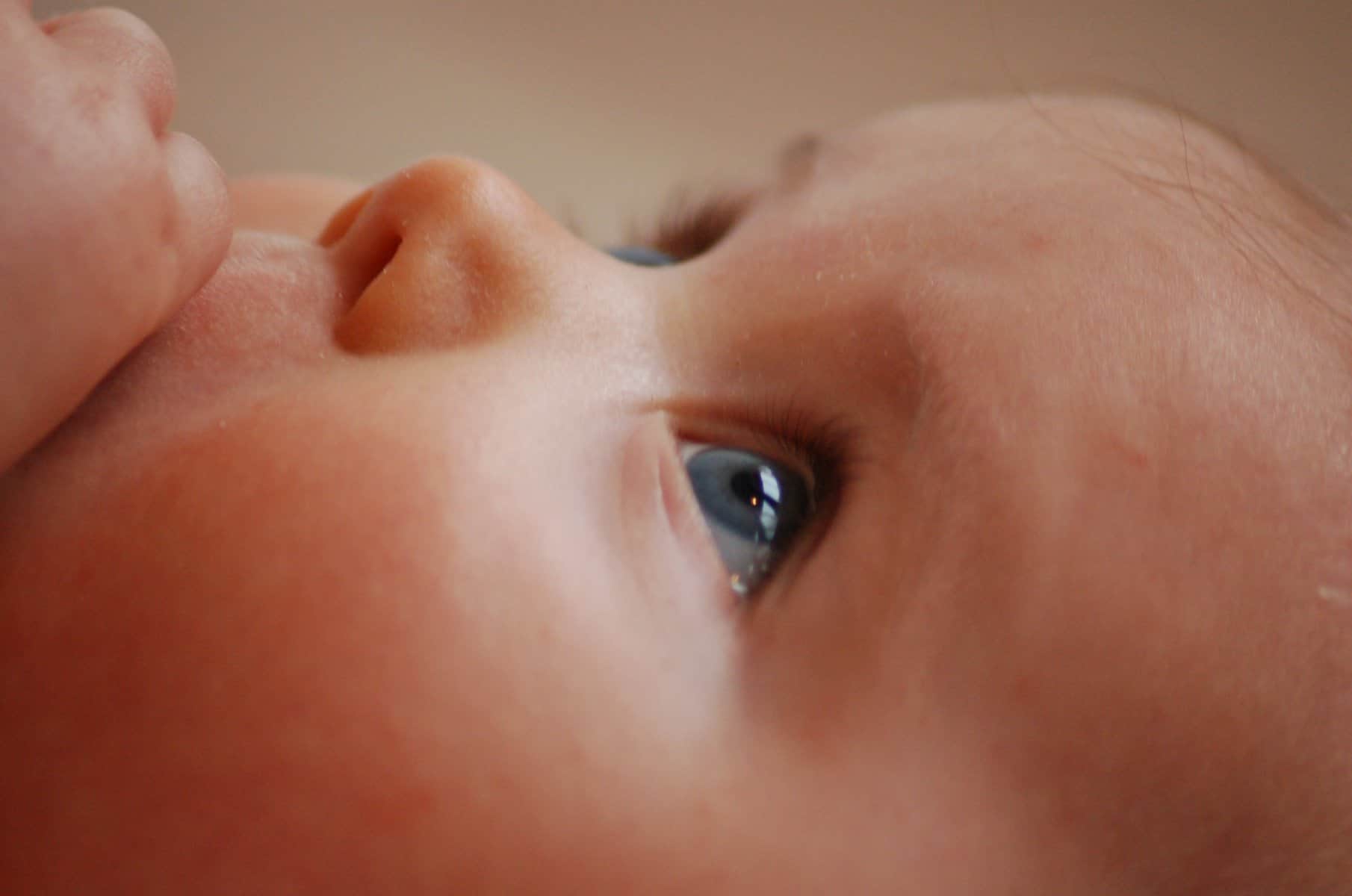
When a baby develops eyebrows, parents get another responsibility, that of ensuring that these tiny strips of hair stay clean, tidy and groomed.
By taking these steps, you actively monitor your baby’s face, which allows you to spot any abnormalities should they occur.
Looking after your baby’s eyebrows is just as important as looking after your baby’s skin.
Here are a few steps that you can take to make sure that your baby’s eyebrows stay clean:
• First things first, you have to practice regular cleaning. These strips of hair, thin and light as they are, tend to catch dirt. After all, besides making young babies look cute, that’s their purpose.
They protect our eyes. However, we have to clean them regularly.
During bath time, remember to gently and delicately clean your baby’s eyebrows. Use a soft washcloth and clean with fine and light movements.
Your baby has sensitive skin, so you want to ensure you don’t scrub too hard or accidentally pull on their hairs.
• A newly born baby doesn’t require any trimming of the eyebrows.
• Similarly, it’s important never to pluck or tweeze your baby’s eyebrows. Doing so not only damages their delicate hair follicles, but affects future development of eyebrows.
• What about moisturizing? Applying a small amount of baby safe lotion or coconut oil on your baby’s eyebrows supports the healthy development of hair follicles and prevents skin dryness. However, you have to exercise caution not to irritate your baby’s skin.
• It goes without saying that you want to avoid using products that are considered unsafe for newborn babies. Especially since we’re dealing with a very sensitive area that’s close to your baby’s eyes, you want to avoid any harsh or abrasive products and irritants.
• Tending after your baby’s eyebrows is a simple and straightforward part of your daily routine. However, if you do notice anything unusual, such as skin abnormalities, it’s important that you consult with a medical professional for guidance as soon as possible.
Knowing when do babies get eyebrows is important, but it’s just as important to know the do’s and don’ts once they get them.
Gentle cleaning and moisturizing helps support your little one’s eyebrow development, but it’s also vital that you avoid trimming or plucking.
There’s a lot to take into consideration. Eyes are a sensitive area of your baby’s skin, especially during the first few months after birth.
However, with the right guidance, you can safely tend to your baby’s eyebrows and ensure that they develop and grow optimally.
Abnormalities in Baby Eyebrows

Babies develop eyebrows naturally, but sometimes abnormalities occur.
As you observe the growth and the development while tending to your little one’s brows, you can notice these abnormalities in time, understand the possible causes and seek medical treatment.
Babies usually don’t have any trouble growing eyebrows, but they have very delicate skin and the process can take time, so it’s important to take everything into consideration.
Let’s examine some of these abnormalities and consider treatment options, if necessary.
• Sparse eyebrows are common in young babies. Especially during the first few months while the baby’s eyebrows are thin and light. However, if you notice that your baby’s brows are thinning over time, it would be wise to consult with a medical professional.
Bear in mind that newborns are generally born with extremely light and sparse eyebrows, making it seem as if they have none. But, that doesn’t mean they won’t grow them in time.
• What about unibrows? When two eyebrows in the middle, a unibrow is created. In our time and age, it’s often considered cosmetically unappealing, but this varies from culture to culture. Nevertheless, having a unibrow is not a cause for any kind of medical concern.
Even if your baby has a unibrow, it’s generally considered best not to trim or remove your baby’s hair follicles, since there’s no need. Instead, leave it up to your child to eventually decide on their own. Until then, tend to their eyebrows by practicing regular cleaning.
• Although somewhat uncommon, babies sometimes develop particularly overgrown eyebrows, long and thick, which can cause your newborn to experience discomfort.
Sometimes, it happens due to genetics, but other times overgrown brows occur as a symptom of a medical condition known as hypothyroidism.
That’s why it’s important to monitor your baby’s hair development closely so that you can spot any clear irregularities.
• What if your baby has uneven eyebrows? Well, first of all, don’t worry, because uneven brows are totally normal, so there’s no reason for concern.
However, if you notice that your baby’s eyebrows have suddenly gone uneven, make sure to inspect them closely.
Check for any hidden injuries or even an infection.
• Finally, if you spot any kind of inflammation around your baby’s eyebrows, such as redness or swelling, it could point to a skin condition that requires medical attention, or, instead, a sign of infection.
Either way, it’s important to seek medical treatment at once.
In case of baby eyebrow abnormalities, you want to make sure that your concerns aren’t cosmetic in nature.
However, if you have reason to believe that your baby’s eyebrows could point to an underlying medical condition, it’s important to seek further guidance.
When Do Babies Get Eyelashes
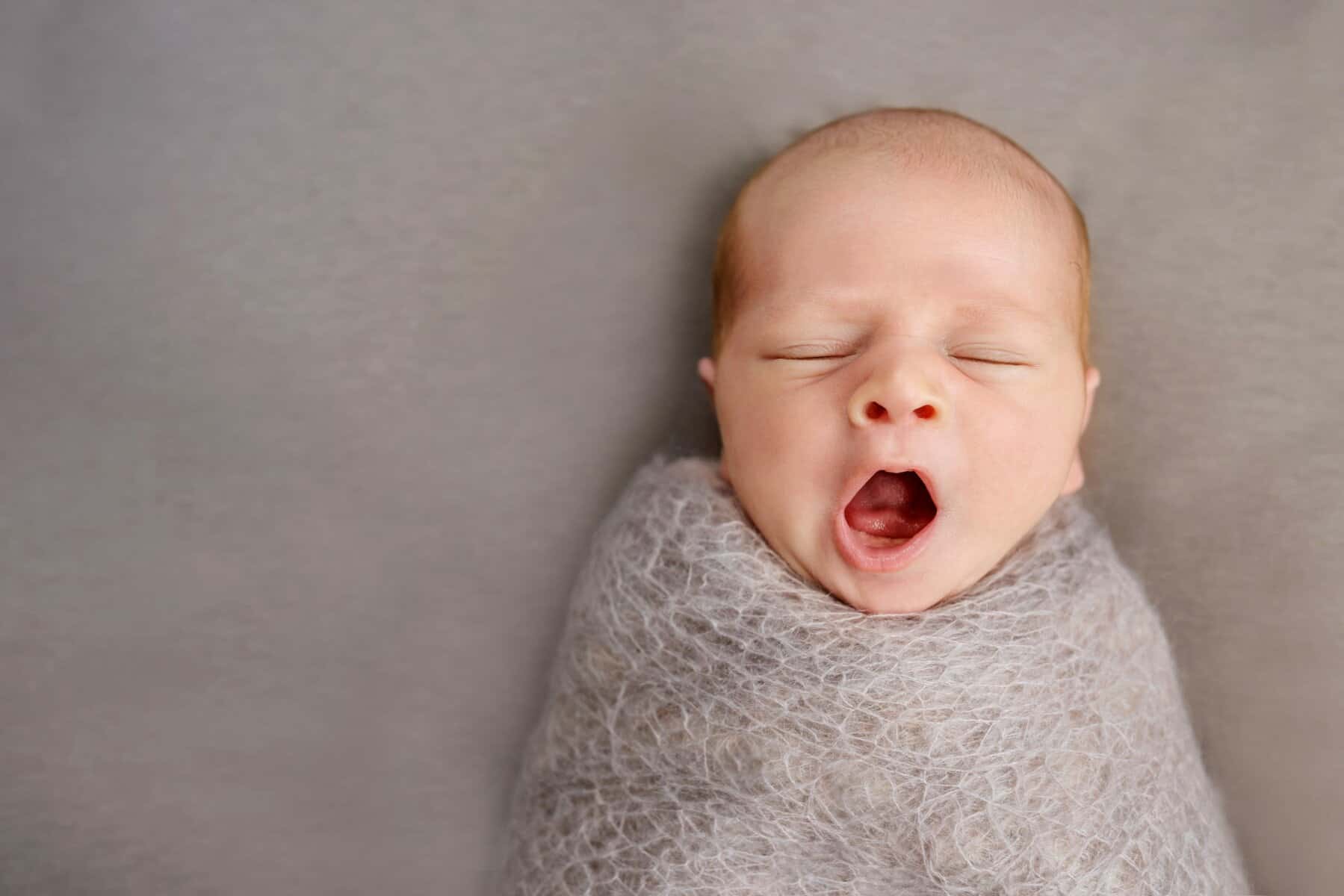
Having answered when do babies get eyebrows, it’s also important to know when do babies get eyelashes.
These tiny hair follicles, in combination with eyebrows, protect your baby’s eyes from debris, dirt and other foreign objects.
When does this growth happen?
You will notice that a baby is usually born with hair on their eyelids. Eventually, with time and growth, this hair grows into a fine set of eyelashes to frame your little one’s eyes.
As such, they become much more prominent not within weeks, but within months after a baby is born. Usually, you can expect a baby to develop eyelashes by 3 to 4 months fully.
Still, they grow hair, both eyebrow and eyelash hair, after the first few months.
Now that you know when do babies get eyelashes, let’s take a look at what affects their development. There are certain factors that contribute to how your little one’s eyelashes are going to turn out.
These include, first and foremost, genetics, nutrition and health.
Even though it’s not always the case, if the parents have, for example, long eyebrows and eyelashes, then there’s a good chance that a baby will have them, but it’s not guaranteed.
On top of that, you want to make sure that your baby eats well, because a good and healthy nutrition contributes to hair growth.
This includes an all-around diet of protein, vitamins and minerals – everything your baby needs to support their health and growth.
For one reason or another, some parents dislike the aesthetics of their child’s eyebrows and eyelashes. Even though you may be tempted to trim or groom their hair, it’s crucial that you keep in mind that it’s not recommended and that it’s considered unsafe, in fact.
As far as grooming is concerned, all you have to do is clean the area around their eyes with soft and gentle movements during bath time.
If you’re using oils to massage your baby, it’s important to remember that coconut oil, for example, can get eyelashes tangled.
Knowing when do babies get eyelashes, therefore, is just as crucial as knowing when do babies get eyebrows. Note that these are natural processes, but they vary from baby to baby.
Some babies take longer for them to grow their hair, and some are just born with it.
In Conclusion
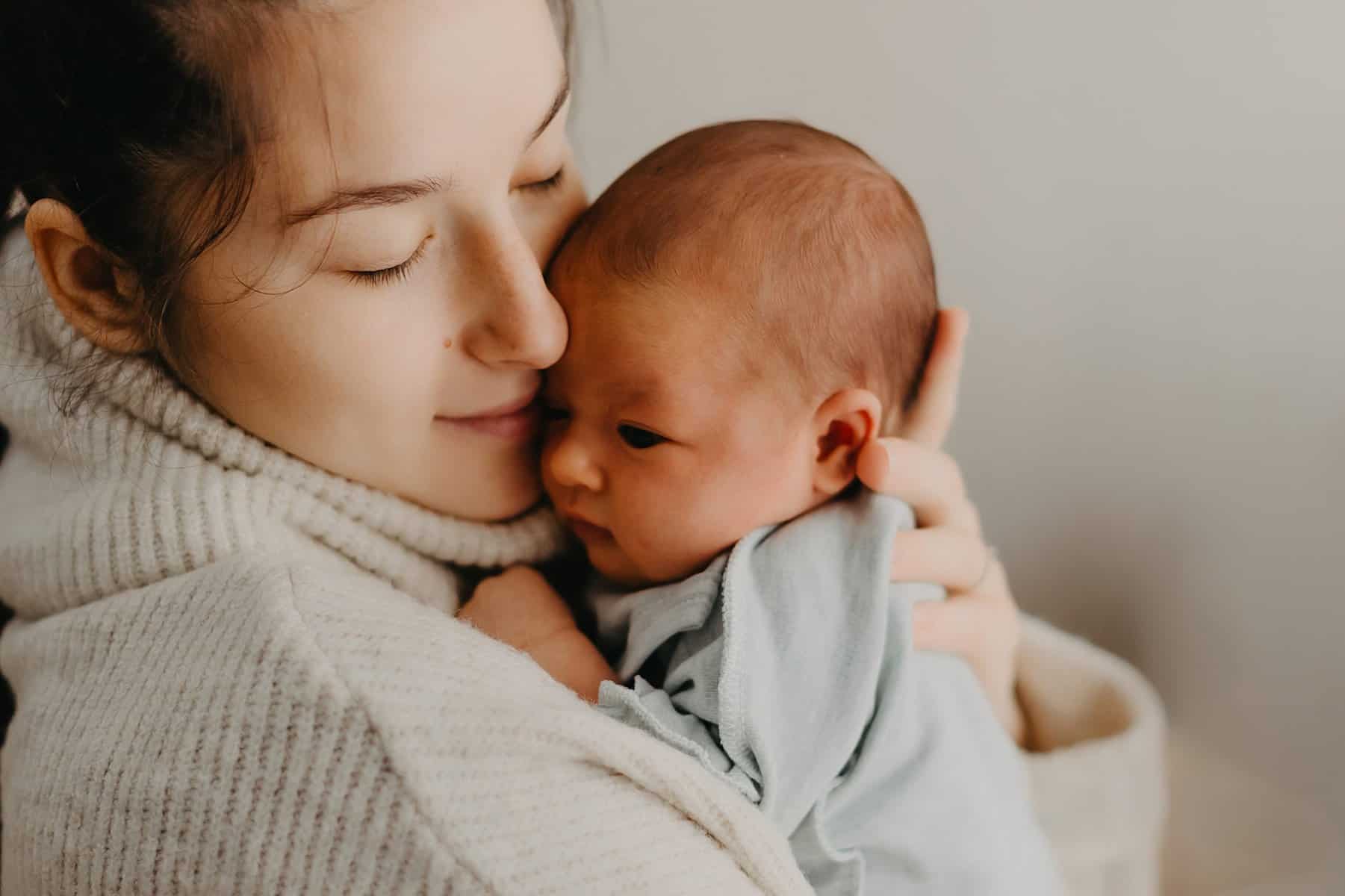
The natural process by which a baby develops eyebrows and eyelashes is gradual. It starts early, during the first trimester, and continues well into the postnatal period. In fact, a baby continues to grow eyebrow hair for years after birth, well into their teenage years.
As a parent, seeing your baby without eyebrow hair inevitably makes you question the timeline. Therefore, the purpose of this article is to guide you through the process of your little one’s hair growth, as well as help you understand how to nurture it properly.
Genetics play a huge part. Nutrition and health, too. By taking the time to observe your baby’s hair as it grows allows you to spot any irregularities, should they occur. If you have any concerns with your baby’s hair growth, don’t hesitate to consult a professional.
Still, it’s advised for parents to be patient with their baby.
Hair takes time to grow, and it grows differently for everyone. While one baby may have lush eyebrows as soon as they come into this world, some babies take time to develop their eyebrow hair follicles fully.
As a parent, during pregnancy and after, you have to do your best to familiarize yourself with the natural progression of hair growth.
Keeping track of how your baby grows hair is key, because it allows you to monitor how your baby develops eyebrow and eyelash hair.
In conclusion, understanding how and when a baby grows eyebrows and hair follicles is important, because you want to have knowledge regarding all parts of your little one’s growth and development, be it hair, permanent teeth or physical activities.

Mother of three and a primary school teacher. I’ve always loved being around children and helping them, so I chose my path as a teacher. It is sometimes hectic with three children, but I am 100 percent into it and wouldn’t change it for anything in the world.


